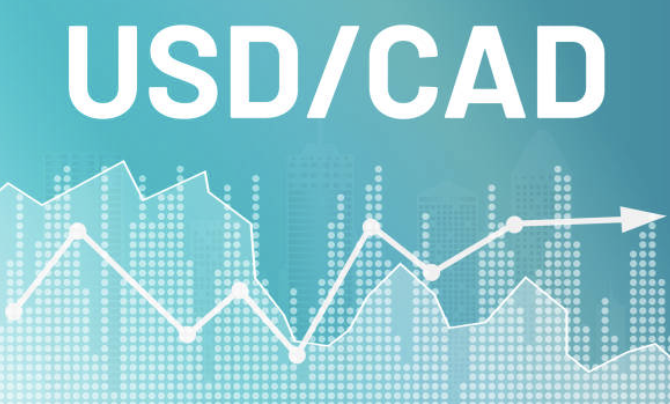
Larissa Barlow
Apr 15, 2022 10:35
A hawkish Fed Williams combined with a sudden increase in oil prices raised the inflation alarm, sending US rates higher and effectively turning the market for sale into the long weekend, snuffing out any remaining positive effects from the somewhat lower but still scorching US CPI figure.
Indeed, the inflationary implications of the Russia-Ukraine conflict are now more significant than direct military events in a market sense. These repercussions have created an unpredictable climate, which may cause investors to be cautious.
Additionally, the accompanying high rate volatility hinders many passive investors from reinvesting in more favorably priced fixed income, which may weigh on stocks.
Markets, I believe, will continue to argue the peak CPI until the next major inflation measurement. Nonetheless, Wednesday's PPI scorcher signaled that consumer prices in the US are unlikely to converge to goal anytime soon, topping or not.
Given the Good Friday holiday, this should be a quiet session. However, the dollar is strong following Fed Williams' decision to change his tune and self-mark to market in terms of FOMC consensus.
There was no new information in his Bloomberg TV interview other than confirmation that the Fed remains unflinchingly hawkish at the moment and is unlikely to shift course based on one slightly lower inflation reading.
The Fed must drive inflation closer to target through aggressive rate hikes, which may be costly in the form of increased unemployment and weaker stock market performance. Nonetheless, those two calling cards do not scream US exceptionalism and do not bode well for the US dollar's medium-term prognosis.
With US rates leaping to the beat of a hawkish Federal Reserve, we could see equity markets resume the march to recession.
There are no surprises here as oil prices continue to climb, with global supply constraints outweighing fears over slowing Chinese demand.
Additionally, major foreign trading houses indicated plans to reduce their purchases of Russian crude and oil products beginning in mid-May, in response to the EU's financial penalties against Russia.
Despite Germany's refusal to agree to a total oil embargo this week, the EU is continuing to tighten the screws on anyone who effectively pays for Russian energy in Roubles, implying that any direct expiring contracts with Russian firms will not be renewed. By year's end, there will almost certainly be a complete cessation of all transactions out of fear of being sanctioned by the EU and US. Notably, it will be difficult to envisage these corporations resuming acquisitions under any circumstances.
Hong Kong stated on Thursday that it would relax some of the world's strictest Covid regulations, letting beauty salons, cinemas, and gyms to reopen on April 21, as infections in the global financial capital remain below 2,000 per day. The findings may result in a relaxation of Covid restrictions on the Mainland and, at the very least, rolling lockdowns, given that the Omicron data profile is significantly less severe than Delta's. Regulators in the Mainland, I believe, will exploit Hong Kong as a petri dish.
According to this opinion, a reduction in the RRR today might strengthen oil via the Mainland demand channel if China gradually abandons its zero Covid policy. However, the positive view is that once these restrictions are lifted sooner rather than later, the government would increase spending aggressively, effectively fueling the commodity rise.
The market is now forecasting only 50 basis points of ECB tightening this year, implying that zero rates will be achieved by year's end (46bp by October). That makes logic to me. As a result, the most extreme hawkishness has been priced out, which is understandable given the current turmoil.
However, Bloomberg and Reuters note that despite Thursday's meeting, ECB sources indicate that a July hike is still feasible. And, at the very least, this indicates that the hawks are not yet giving up on a July hike, implying that announcing is difficult but not impossible. That is, unless more clear communication occurs, the market may continue to price 50:50. (for a time, the range traded in the 1.08's)
However, a September 25bp raise must be the very minimum. As a result, I believe the market debate will shift to 50 basis points in September. That appears to be a realistic scenario when GDP slows, and it would still eliminate the EURUSD's negative rate drag. While I continue to believe that zero rates this year are a given, I believe that rising above zero will be considerably more challenging. As a result, I feel the USD is the clear winner here, and EURUSD might move lower.
Tokyo's desire to sell the USD/JPY resulted in the pair trading between a high around 125.70 and a low near 125.10, but dips were purchased. To attract momentum traders, we will likely need a stronger break above the 2015 high of 125.80/90. In general, the pair has been relatively durable in response to yesterday's decline in US yields. Thus, with US 10-year yields returning to 2.82 percent following a hawkish Fed, Williams USDJPY reaches 126 once more.
I would not pursue this one higher, and I am more willing to profit now owing to the possibility of a stimulus package that would alleviate most of the pain associated with rising energy prices, at least for consumers.
As CPI inflation in Japan is likely to reach approximately 2% (the BoJ's inflation objective), many are wondering whether the BoJ would alter its monetary policy, particularly given the BoJ/Fed policy divergence and the yen's continued depreciation against the dollar.
The Bank of Japan believes that JPY depreciation is beneficial to the economy.
There is a substantial negative production gap due to the sluggish pace of economic recovery caused by the Covid residual impact.
2% CPI inflation is unsustainable, as the primary drivers are food and energy, both of which are detrimental to GDP.
According to the Bank of Japan's current forward guidance on policy rates, the central bank "expects short- and long-term policy interest rates to remain at current or lower levels."
The MoF is in charge of currency policy. The fast devaluation of the yen should be a cause for concern, since it will have a detrimental effect on households via a loss of purchasing power. Indeed, this would almost certainly result in increased public pressure to act on the yen. As a result, PM Kishida is expected to launch a sizable fiscal stimulus plan in June (before of the Upper House election on June 10) as well as emergency steps to assist mitigate the consequences of rising oil and food prices.
When I was market making a $Yen book via Tokyo for far too many decades, I would keep an eye out for Tokyo flows in these types of conditions, as local banks are much more in sync with regulators.

Apr 15, 2022 10:32

Apr 15, 2022 10:39